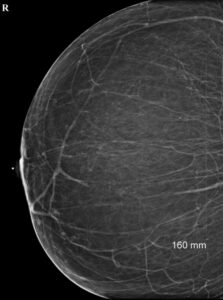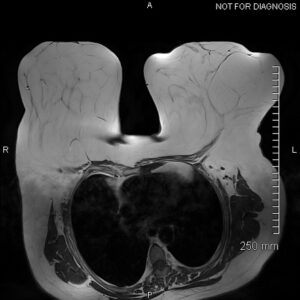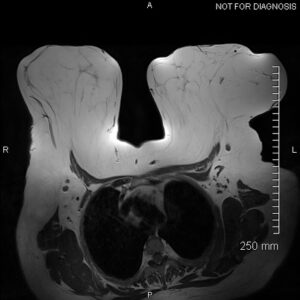WhaT Is Gigantomastia?
Gigantomastia, also known as macromastia or breast hypertrophy, is a rare medical condition characterized by abnormal and excessive breast growth. Women with gigantomastia experience a significant increase in breast size beyond what is considered normal or proportional. This condition affects both breasts and can cause physical discomfort, pain, and emotional distress.
The exact cause of gigantomastia is not fully understood, but hormonal imbalances, particularly elevated estrogen levels, are believed to play a role. It can occur spontaneously or be triggered by factors such as pregnancy, puberty, hormonal fluctuations, certain medications, or underlying medical conditions. Genetic predisposition may also contribute to the development of gigantomastia.
Types Of Gigantomastia.
A. Juvenile gigantomastia:- This type occurs during puberty, usually between the ages of 11 and 19. It is thought to be caused by the increased levels of sex hormones during puberty.
B. Gestational gigantomastia:- This type occurs during pregnancy. It is thought to be caused by the increased levels of pregnancy hormones, such as estrogen and progesterone.
C. Drug-induced gigantomastia:- This type occurs after taking certain medications, such as D-penicillamine, which is used to treat rheumatoid arthritis.
D. Idiopathic gigantomastia:- This type occurs spontaneously, with no known cause. It is the most common type of gigantomastia.
Symptoms Of Gigantomastia.
Gigantomastia, also known as macromastia or breast hypertrophy, is a rare condition characterized by excessive breast growth. The main symptoms of gigantomastia include:-
A. Severely enlarged breasts:- The breast size is disproportionately large compared to the body. The breasts can weigh up to 10-30 pounds each.
B. Back pain:- The excessive breast weight can cause pain in the neck, shoulders, and back. It can also lead to poor posture.
C. Breast pain:- The enlarged breasts may ache or be tender to touch.
D. Skin irritation:- The enlarged breasts can cause skin irritation, rashes, and infections under the breasts.
E. Difficulty exercising:- The excessive breast size can make physical activities difficult and painful.
F. Psychological issues:- Some women may experience anxiety, depression, and poor self-esteem due to their breast size and appearance.
G. Difficulty finding bras and clothes:- It can be challenging to find bras and clothing that fit properly and provide adequate support. Most standard size bras do not accommodate breasts of this size.
H. Stretch marks:- The rapid breast growth can lead to stretch marks on the breasts.
I. Difficulty with daily activities:- Simple acts like walking, driving, and sleeping can be negatively impacted by the excessive breast weight.
J. Poor nipple sensation and position:- The enlarged breasts can stretch and displace the nipples, leading to loss of sensation or inverted nipples.
Diagnosis Of Gigantomastia
The diagnosis of gigantomastia, or excessive breast growth, typically involves a comprehensive evaluation conducted by a healthcare professional. The following steps are typically taken during the diagnostic process:-
A. Medical History Review:- The healthcare provider will start by taking a detailed medical history, including information about the onset and progression of breast enlargement, any associated symptoms, and relevant medical conditions or medications.
B. Clinical examination:- The physician will examine the breasts, noting their extremely large size, skin changes, nipple position, and any other abnormalities. The breasts will be measured to determine the level of disproportion.
C. Imaging Studies:- Imaging studies may be ordered to gather more information and aid in the diagnosis. These can include:
— Mammography:- A mammogram is an X-ray of the breast tissue that can help identify any abnormalities, assess breast density, and provide information about the composition of the breasts.


— Ultrasound:- An ultrasound scan uses sound waves to create images of the breast tissue. It can help differentiate between solid and cystic components of the breast and provide further insights into the nature of the enlargement.
— Magnetic Resonance Imaging (MRI):- In some cases, an MRI may be recommended to obtain more detailed images of the breast tissue and rule out other underlying conditions.


D. Hormone and Laboratory Tests:- To identify any hormonal imbalances or underlying endocrine disorders contributing to gigantomastia, the healthcare provider may order blood tests to measure hormone levels. These tests can include measuring estrogen, progesterone, prolactin, thyroid-stimulating hormone (TSH), and other relevant hormones.
E. Biopsy:- In certain cases where there is suspicion of an underlying breast abnormality or to rule out other conditions, a biopsy may be recommended. A small tissue sample is taken from the breast and sent to a laboratory for microscopic examination to determine the nature of the tissue and rule out breast cancer or other pathological conditions.
Treatment Of Gigantomastia?
The most effective treatment for gigantomastia is breast reduction surgery, also known as reduction mammoplasty. The surgical options include:
A. Bilateral breast reduction:- Removing excess breast tissue, fat, and skin from both breasts to reduce their size. This is the most common procedure for gigantomastia. It can provide significant relief from symptoms and improve quality of life.
B. Staged breast reduction:- Performing breast reduction through multiple surgeries, usually removing around 3-4 pounds of tissue at a time from each breast. This is done for extremely large breasts to reduce risks. The surgeries are spaced several months apart to allow healing.
C. Free nipple graft:- Removing nearly all breast tissue and reattaching the nipples as grafts. This is done in severe cases where blood supply to the nipples may be compromised after large tissue removal. Nipple sensation is typically lost with this technique.
D. Mastectomy with reconstruction:- Removing nearly all breast tissue from both breasts, followed by implant or flap reconstruction. This radical approach is rarely needed except in cases of malignant gigantomastia.
# Other treatment options include:-
A. Special bras and bandages:- To help support the breasts, reduce pain, and prevent skin irritation. However, they do not reduce breast size.
B. Pain medication:- For chronic back, neck, and breast pain. Pain management is typically temporary until definitive treatment like breast reduction surgery can be performed.
C. Counseling:- Speaking with a therapist or counselor can help address psychological issues related to body image and quality of life. Counseling may be helpful both before and after surgery.
D. Hormone therapy:- Has not been proven effective for reducing breast size in gigantomastia. It can potentially slow the progression of breast growth but does not reverse it. Surgery remains the most effective solution.
E. Diet and exercise:- Also do not directly reduce breast size in gigantomastia, though maintaining an ideal weight can promote general health. Gigantomastia occurs independently of body weight, so diet and exercise alone will not treat the condition.
Complications.
The extreme breast enlargement and the excess weight of the breasts can result in physical complications, including:
— Over-stretching of the skin
— Skin rashes under the breasts
— Ulcers on the skin
— Neck, shoulder, and back pain
— Headaches
— Breast asymmetry (when one breast is larger than the other)
— Temporary or permanent nerve damage (specifically the fourth, fifth, or sixth intercostal nerves), resulting in loss of nipple sensation
— Difficulty playing sports or exercising, leading to
FOR MORE CASE STUDY CLICK HERE
BOOK LINK :- Radiographic Pathology for Technologists


Wonderful presentation